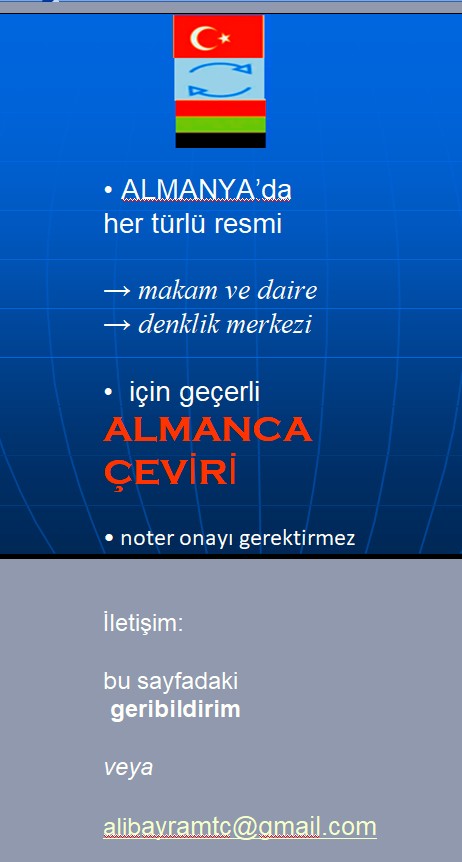prototype
İngilizce - Türkçe
sıklık sırası: 9832ad / noun
PROTOTYPE = ['proutıtayp] noun
ilk örnek, prototip
PROTOTYPE: An original or experimental model of an aircraft, often built to test and evaluate design concepts, performance characteristics, or technological innovations.
PROTOTYPE
Functional prototype: A working model or representation of a product or system that demonstrates its basic functionality and design.
Conceptual prototype: A preliminary model or representation of an idea or concept, often used to explore and communicate design concepts.
Physical prototype: A tangible model or mock-up of a product or system, usually constructed using physical materials.
Digital prototype: A computer-generated model or simulation of a product or system, used for design validation and testing.
Prototype development: The process of creating and refining prototypes to evaluate design concepts and functionalities.
Prototype testing: The evaluation and validation of a prototype to assess its performance, usability, and compliance with design requirements.
Prototype iteration: The repetitive process of refining and improving a prototype based on feedback and testing results.
Prototype manufacturing: The production of prototypes using various manufacturing processes, such as 3D printing, machining, or molding.
Software prototype: A preliminary version of a software application or system, used to demonstrate functionality and gather user feedback.
Hardware prototype: A physical model or mock-up of a hardware device, often used for testing and validation purposes.
Functional prototype: A working model or representation of a product or system that demonstrates its basic functionality and design.
Conceptual prototype: A preliminary model or representation of an idea or concept, often used to explore and communicate design concepts.
Physical prototype: A tangible model or mock-up of a product or system, usually constructed using physical materials.
Digital prototype: A computer-generated model or simulation of a product or system, used for design validation and testing.
Prototype development: The process of creating and refining prototypes to evaluate design concepts and functionalities.
Prototype testing: The evaluation and validation of a prototype to assess its performance, usability, and compliance with design requirements.
Prototype iteration: The repetitive process of refining and improving a prototype based on feedback and testing results.
Prototype manufacturing: The production of prototypes using various manufacturing processes, such as 3D printing, machining, or molding.
Software prototype: A preliminary version of a software application or system, used to demonstrate functionality and gather user feedback.
Hardware prototype: A physical model or mock-up of a hardware device, often used for testing and validation purposes.
Engineering prototype: A prototype designed and built to test the functionality and performance of engineering designs and concepts.
Proof-of-concept prototype: A prototype developed to demonstrate the feasibility of a concept or idea, often used to secure funding or investment.
Rapid prototype: A quickly produced prototype, often using rapid prototyping technologies, to accelerate the design and development process.
Scaled prototype: A prototype that is scaled down in size or scope from the final product, used for testing and validation purposes.
Virtual prototype: A computer-generated simulation or representation of a product or system, used for design validation and testing.
Pilot prototype: A prototype produced in limited quantities for initial testing and evaluation before full-scale production.
Functional prototype: A working model or representation of a product or system that demonstrates its basic functionality and design.
Conceptual prototype: A preliminary model or representation of an idea or concept, often used to explore and communicate design concepts.
Physical prototype: A tangible model or mock-up of a product or system, usually constructed using physical materials.
Digital prototype: A computer-generated model or simulation of a product or system, used for design validation and testing.
Prototype development: The process of creating and refining prototypes to evaluate design concepts and functionalities.
Prototype testing: The evaluation and validation of a prototype to assess its performance, usability, and compliance with design requirements.
Prototype iteration: The repetitive process of refining and improving a prototype based on feedback and testing results.
Prototype manufacturing: The production of prototypes using various manufacturing processes, such as 3D printing, machining, or molding.
Software prototype: A preliminary version of a software application or system, used to demonstrate functionality and gather user feedback.
Hardware prototype: A physical model or mock-up of a hardware device, often used for testing and validation purposes.
Engineering prototype: A prototype designed and built to test the functionality and performance of engineering designs and concepts.
Proof-of-concept prototype: A prototype developed to demonstrate the feasibility of a concept or idea, often used to secure funding or investment.
Rapid prototype: A quickly produced prototype, often using rapid prototyping technologies, to accelerate the design and development process.
Scaled prototype: A prototype that is scaled down in size or scope from the final product, used for testing and validation purposes.
Virtual prototype: A computer-generated simulation or representation of a product or system, used for design validation and testing.
Pilot prototype: A prototype produced in limited quantities for initial testing and evaluation before full-scale production


